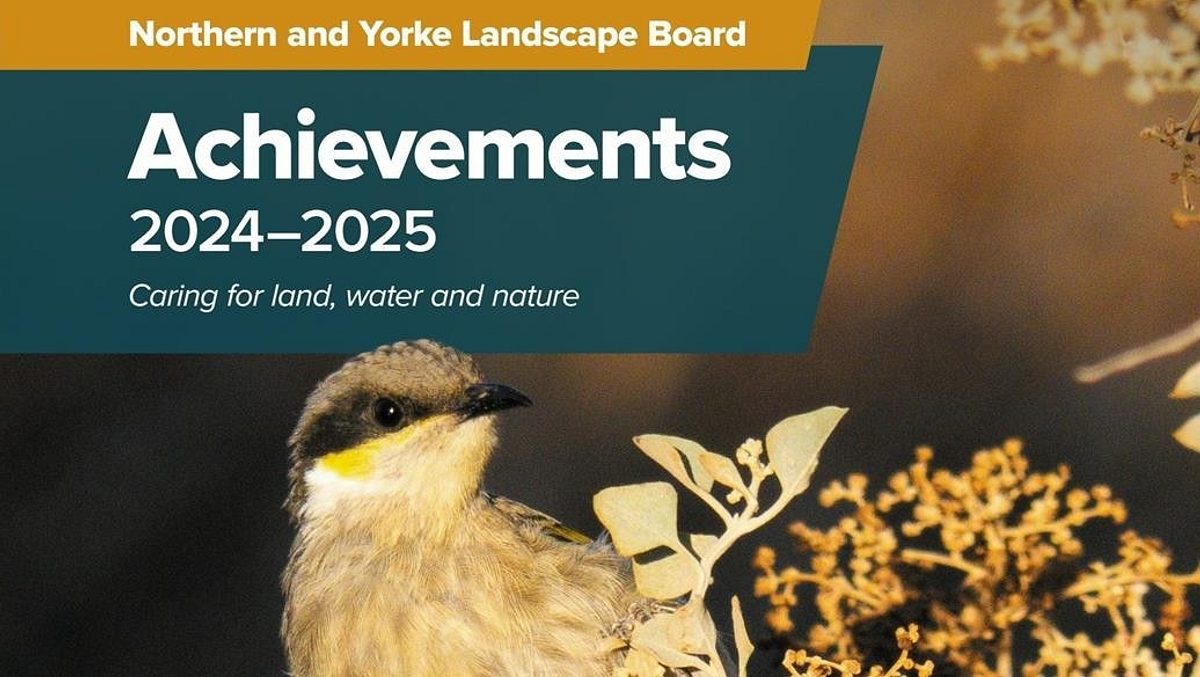Yorke Peninsula delivers spike in hooded plover survivors
A record number of Yorke Peninsula-born hooded plover chicks took to the skies between August and March, more than two and a half times the number of fledglings compared to last season.
Yorke Peninsula’s breeding season saw 43 chicks become airborne, which is 26 more than the 2020/2021 season when 17 hooded plover fledglings were recorded.
Graduating to the flying stage is a significant milestone for the chicks of these threatened beach-nesting birds. It means they have survived 28 days in eggs on the sand and five weeks foraging for food on the beach where they can fall prey to off-leash dogs, vehicles, unwitting beach-goers and predators like foxes, roaming cats and ravens.
In fact, the odds are stacked against hooded plovers, with their eggs only having a 2.5% chance of reaching adulthood.

Northern and Yorke Landscape Board Officer Janet Moore paid tribute to the 32 dedicated Yorke Peninsula volunteers who kept a watchful eye on eggs and chicks this breeding season. She said an increase in nest monitoring volunteers this year ensured that the fledglings were cared for and recorded.
“This result is well beyond our expectations and would not be possible without the efforts of BirdLife Australia, Friends of Hooded Plover Yorke Peninsula, and of course beach-goers who are giving Hoodies the space they need,” she said.
“The Friends of Hooded Plover Yorke Peninsula volunteers are the best kind of adoptive parents you could ask for. Many of them check on the Hoodies daily when they have chicks, put up signs and fences where they can and ride a roller coaster of emotions.
“The results from this breeding season are really encouraging, but we can’t relax our efforts in helping to build their numbers. They still face many threats and even this year many of the parents were not able to hatch chicks, let alone raise a fledgling.”

Yorke Peninsula is home to the largest regional hooded plover population in South Australia, making up 37% of the total SA population and 19% of the combined numbers from SA, Victoria and New South Wales.
The biennial count in November 2020 showed a steady rise in hooded plovers on Yorke Peninsula, with a 15% increase within two years. This amounted to a total of 285 adult hooded plovers, 37 more than the 2018 count. The next biennial count is scheduled for November this year.
Friends of Hooded Plover Yorke Peninsula volunteer Nanou Cabourdin cares for four pairs of hooded plovers at Point Turton and was thrilled to see six chicks reach fledgling stage. “I’ve never had such a good result in my five seasons of monitoring,” she said, adding that she is encouraged by the number of visitors and inhabitants who are aware of the hooded plovers’ plight.
At the same time, she holds concerns for the birds residing on Flaherty’s Beach near Point Turton. The stunning beach, which is open to 4WD access, was recently dubbed “Australia’s most beautiful beach” on social media, prompting a rise in visitor numbers.
“The increase of visitors on that beach is certainly not a big win for the wildlife, with 200 cars visiting in one day around New Year,” said Ms Cabourdin.
“People are driving their four-wheel drive vehicles above the high tide line, which is where hooded plovers like to nest. We want to see people enjoy the beach, but at the same time consider the hooded plovers that call it home.”
Marna Banggara, which includes Birdlife Australia’s Beach Nesting Birds project, is jointly funded through the Northern and Yorke Landscape Board, the Australian Government’s National Landcare Program, the South Australian Department for Environment and Water, WWF-Australia and Foundation for National Parks & Wildlife, in partnership with the Narungga Nation Aboriginal Corporation.


